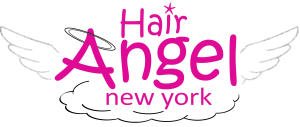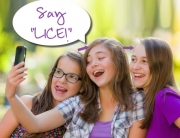Staten Island Advance (NY)
Those lousy little hitchhikers “Head lice is not associated with poor hygiene. It doesn’t cause disease. … It’s just a common problem of childhood; it affects all people of every socioeconomic group.” – Dr. Hadassa Teitelbaum director of inpatient pediatrics at SIUH
Parents urged to keep a sharp eye out for an increasingly common scourge: Head lice
TRACEY PORPORA STATEN ISLAND ADVANCE
Published: September 18, 2012
The new school year means backpacks, pencils, books and, increasingly, a most unwelcome accessory: Head lice.
While neither the city nor the state Health Department keeps statistics on the number of head lice cases in schools, local doctors and lice-removal experts say the yucky pests have been, well, multiplying.
“Head lice (pediculus humanus capitis) has always been common, but there has been an increased trend noticed over the years,” said Dr. Hadassa Teitelbaum, director of inpatient pediatrics at Staten Island University Hospital, Ocean Breeze.
“We most often see lice in the age group between 3 and 12 years old. It’s very commonly spread among school-age kids,” said Dr. Teitelbaum. “The main means of transfer is direct contact. So just being close together is the most common way head lice is spread. It causes a lot of alarm because of the stigma it carries.” And there’s a new wrinkle, involving older kids.
“Since teenagers have iPads and iPods, they lean and look at these items and put their heads together. They have close contact when they are posing for pictures and making videos on their
iPhones,” said Daryl Cotogno, owner of HAIR ANGEL NEW YORK (hairangelny.com), a head lice removal service on Staten Island and in Manhattan.
While the spread of head lice – oval-shaped bugs no bigger than a sesame seed – was once considered seasonal and a winter occurrence, Cotogno said it’s now being seen year-round. “It becomes an epidemic because it isn’t noticed right away,” she said. “When parents don’t alert the school or people their child has been in contact with, that’s when it becomes an epidemic.”
While there is now a “no head lice” policy in all New York City public schools, the Department of Education once had a “no nit” tolerance. Nits are the eggs that lice hatch. Even though lice are
removed from a person’s hair, the nits can hatch eggs within seven to 10 days, essentially re-infesting the person with head lice.
“Students found to have live head lice will be excluded from school and not allowed to return until they are lice-free. Students will be re-examined in 14 days to confirm they have remained lice-free,” said DOE spokeswoman Marge Feinberg. The policy was changed in 2008 because “studies have shown that schoolwide screenings for nits are time-consuming, costly and ineffective.”
The Archdiocese of New York has the same policy for its schools. “All students determined to have an active case of lice will be excluded from school until they receive treatment,” said Fran Davies, an archdiocesan spokeswoman.
Many parents associate lice with uncleanness. However, it’s just the opposite: Lice like clean hair. “Head lice is not associated with poor hygiene. It doesn’t cause disease,” said Dr. Teitelbaum. “It’s
just a common problem of childhood; it affects all people of every socioeconomic group.” She also noted that lice infestations aren’t necessarily associated with longer hair, and that boys also
are vulnerable.
“Girls may have it more commonly because they play more closely together. Perhaps they share brushes,” said Dr. Teitelbaum.
If you’re aware of a head lice outbreak in your child’s school, it’s recommended to check your child’s head every night for an infestation. “Parents should check the forehead, behind the ears and the nape of the neck. When a louse lays an egg, it secrets a saliva, a glue-like substance. Many people are allergic to the saliva and that’s why they begin to itch,” said Cotogno.
It’s recommended that parents invest in a special lice comb that can be purchased at drug stores. To remove lice you have to use this fine-tooth comb along every strand of hair. Some services
recommend applying baking soda or white creamy shampoo then sectioning the hair and running a lice comb along each strand of hair. The excess shampoo should then be wiped on a white paper
towel, so the lice is visible on the towel.
However, Ms. Cotogno – who will travel to a person’s home to perform lice removal services – uses the lice comb on dry hair, followed by an all-natural treatment. If lice or nits are found, she
recommends that the comb-through be repeated daily for two weeks.
There also are over-the-counter lice treatments. “The inexpensive over-the-counter treatment contains one percent Permethrin lotion, that you apply and leave on for 10 minutes and wash out,”
said Dr. Teitelbaum. However, those treatments don’t kill the nits; only the live lice. Therefore, the comb-through is necessary to remove the nits from the hair.
Lice, which can only live off the body for 24 hours, must also be removed from the home. “The linens, towels and clothing in the home should be washed in hot water of about 130 degrees. Some people also recommend vacuuming the carpets and furniture,” said Dr. Teitelbaum.
Stuffed animals and silk comforters that can’t be washed should be left in a plastic bag for 24 hours. As for prevention, it’s recommended that children don’t share brushes, helmets, hats or scarves. There also are a variety of shampoos, conditioners and leave-in sprays made with tea tree oil and lavender, which are said to repel lice and are used by some parents as a preventative measures.
To check for lice, parents should invest in a special lice comb that can be purchased at drug stores. To remove the critters, use the fine-tooth comb along every strand of hair.
HAIR ANGEL NEW YORK IS TRAINED AND CERTIFIED
IN THE MOTHER’S SHEPHERD STRAND-BY-STAND TECHNIQUE™.
www.hairangelnewyork.com





